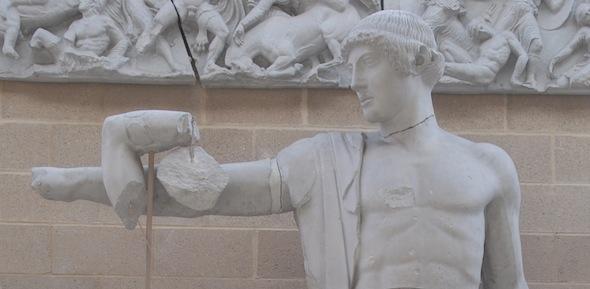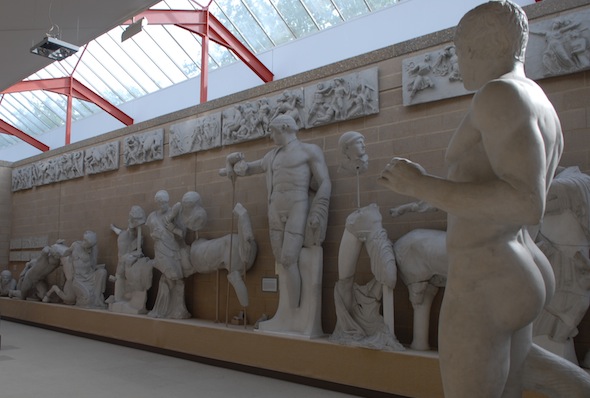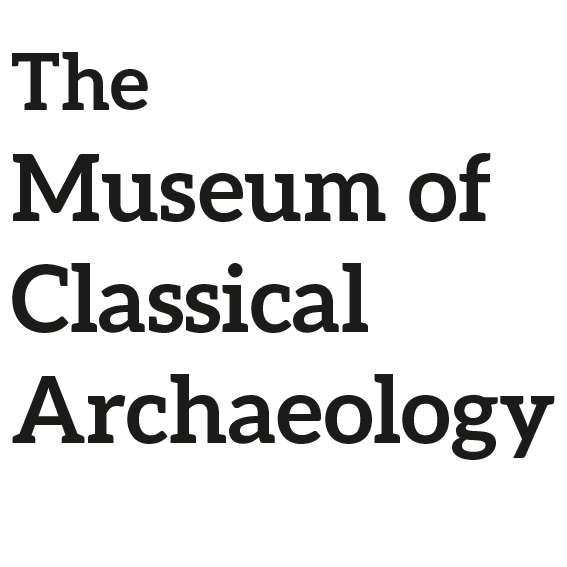
The pediments of the Temple of Zeus at Olympia are some of the best surviving examples of early Classical Greek sculpture. The pediments were completed c.460 BCE and comprise of forty-two figures in total. Unlike in our Cast Gallery, where they are almost at ground level, the originals were placed in the triangular gables at each end of the roof. They were high above the heads of viewers on the ground.
The East Pediment features a scene especially appropriate at the home of the ancient Olympic Games, where athletes competed in view of the temple from 776 BCE to 393 CE: here, preparations are being made for a chariot race, which explains why there are horses flanking the five central figures. On the West Pediment, in contrast, there is depicted a 'centauromachy' – a battle between the half-man, half-horse centaurs and the Lapiths.
On both sides, a god stands tall in the very centre of the pediment, Zeus on the east and Apollo on the west; Apollo, promising to restore order as the god of rationality and self-control, looks nonplussed by the chaos surrounding him. In short, the decoration of the Temple of Zeus at Olympia was carefully calibrated to its context of sport and competition.

Set beneath the pediments, designed to be viewed against them, were a series of carved metopes – individual square panels lined up in a row, with six on each side of the temple. These depict the Labours of Herakles: whatever the human agonies depicted above in the pediments, whether implied or shown, here is testimony to the endurance of the human spirit in the face of strenuous trials.
Although it was built in the fifth century BCE, the Temple of Zeus at Olympia continued in use until the closure of the Olympic games in 393 CE. In fact, one of the best descriptions of the temple was written in the second century CE by a Greek traveller named Pausanias, who describes his visit to Olympia and a number of the (by then centuries old) Greek sculptures and other dedications he sees there.
Find the pediments of the Temple of Zeus at Olympia in Bay C
View the East Pediment on the online catalogue
View the West Pediment on the online catalogue
View the metopes on the online catalogue
Further reading
- Pausanias, Description of Greece 5.7
- R. Osborne 1998, Archaic and Classical Greek Art (Oxford University Press): 169–174
- N. Spivey 1997, Greek Art (Phaidon): 217–224
- S. Woodford 1988, An Introduction to Greek Art (University of Cornell Press): 91–103
- J. Boardman (ed.) The Oxford History of Classical Art (Oxford University Press): 92–94







